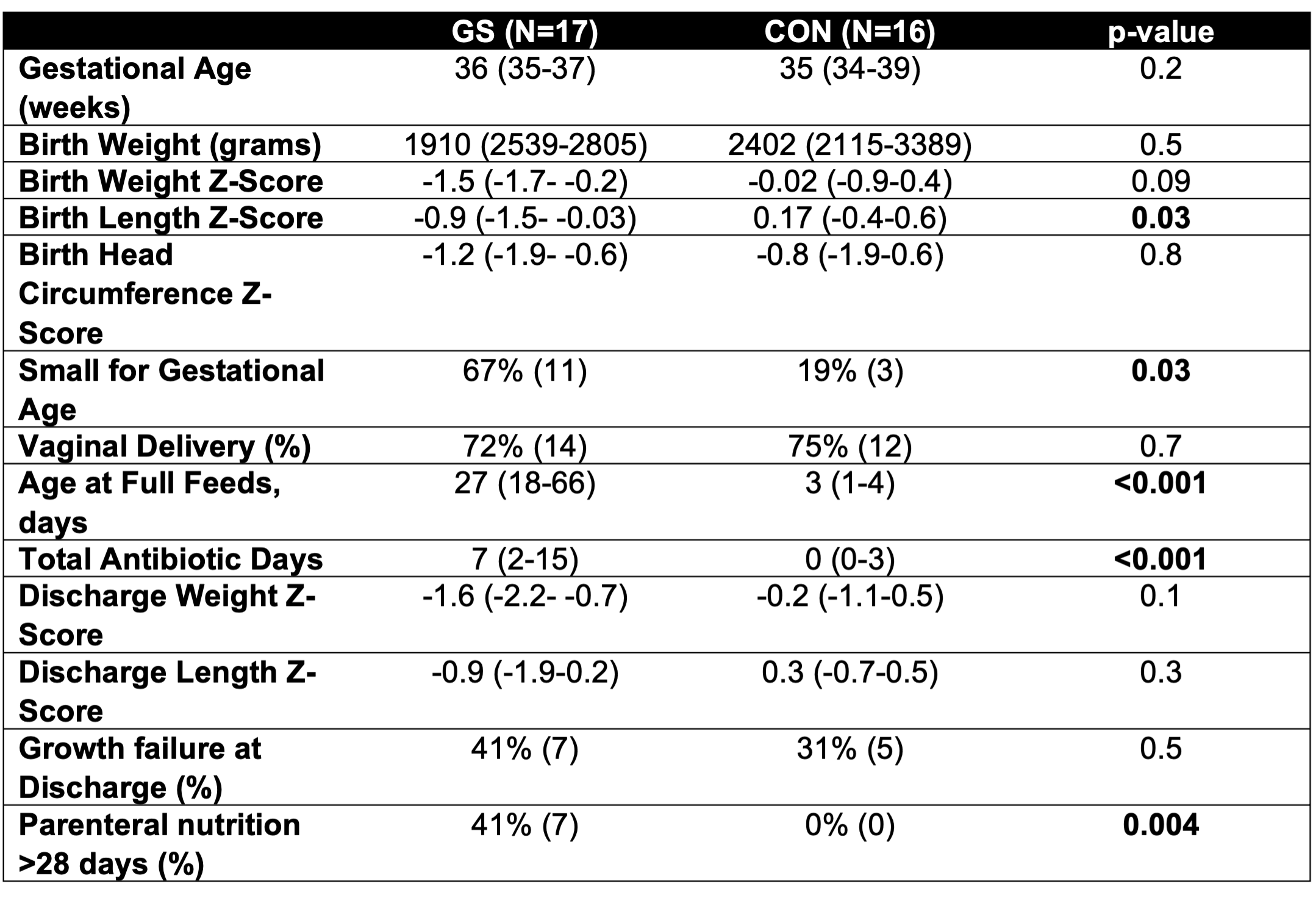Neonatology
Session: Neonatal GI Physiology & NEC 3: GI Physiology and Probiotics
534 - Microbial Characteristics of Infants with Gastroschisis
Sunday, May 5, 2024
3:30 PM - 6:00 PM ET
Poster Number: 534
Publication Number: 534.1800
Publication Number: 534.1800

Katie M. Strobel, MD (she/her/hers)
Assistant Professor Division Neonatology
University of Washington School of Medicine
Burien, Washington, United States
Presenting Author(s)
Background: While the mortality for Infants with gastroschisis (GS) remains low, these infants require prolonged parenteral nutrition (P-PN) secondary to intestinal dysmotility. As a result, these infants are at high risk for growth failure (GF), sepsis, and ischemic gut. Dysmotility alters the gut microbiome, which may contribute to these complications.
Objective: This study’s objectives were to compare 1) the gut microbiome in neonates with GS to hospitalized, late-preterm and term infants without GS, 2) compare the microbiome in infants with GS who require P-PN to GS infants who do not, and 3) compare the microbiome in GS infants who have GF to those without GF.
Design/Methods: Inclusion criteria included GS (GS group) or an infant born between 34 weeks to term admitted to the NICU without congenital anomalies (CON group). P-PN was defined as PN days >28. Growth failure was defined as a decline in weight or length z-score from birth to discharge ≤-0.8. Stool samples were collected weekly during the hospitalization and were analyzed by shotgun metagenomics to characterize bacterial composition, diversity, and function.
Results: Descriptive characteristics for the GS (n=17, 58 samples) and CON (n=16, 26 samples) groups are reported (Table 1). Beta-diversity was different between the cohorts (p=0.002, Figure 1). Infants with GS were found to have increased Staphylococcus aureus (fold change 3.2, p=0.002) and decreased Bifidobacterium (fold change 0.12, p=0.007) compared to the CON group. Functional profiling demonstrated an overall shift in gene family abundances (p-value 0.003) with 47,665 out of a total of 523,732 gene families showing significant differences between CON and GS samples, corresponding to 18 out of 469 MetaCyc pathways (Figure 2).
When infants with GS who required P-PN were compared to those who did not, a decreased abundance of genes in the alpha-glucosidase pathway (-4.958 (1.1), p< 0.001) was observed. Also, when GS GF infants were compared to those without GF, a decreased abundance of genes that are involved in the NAD-diphosphatase pathway was noted (coeff -3.3 (0.7), p< 0.001).
Conclusion(s): Infants with GS have distinct microbial composition and function compared to their late-preterm and term counterparts. In GS infants, bacterial functional capacity differences were observed in infants who required P-PN and those who developed poor growth. Studies are needed to examine metabolomic differences to precisely characterize the relationship of dysbiosis, poor growth, and dysmotility, and whether microbial restoration in GS infants will improve outcomes.

.png)
.png)
